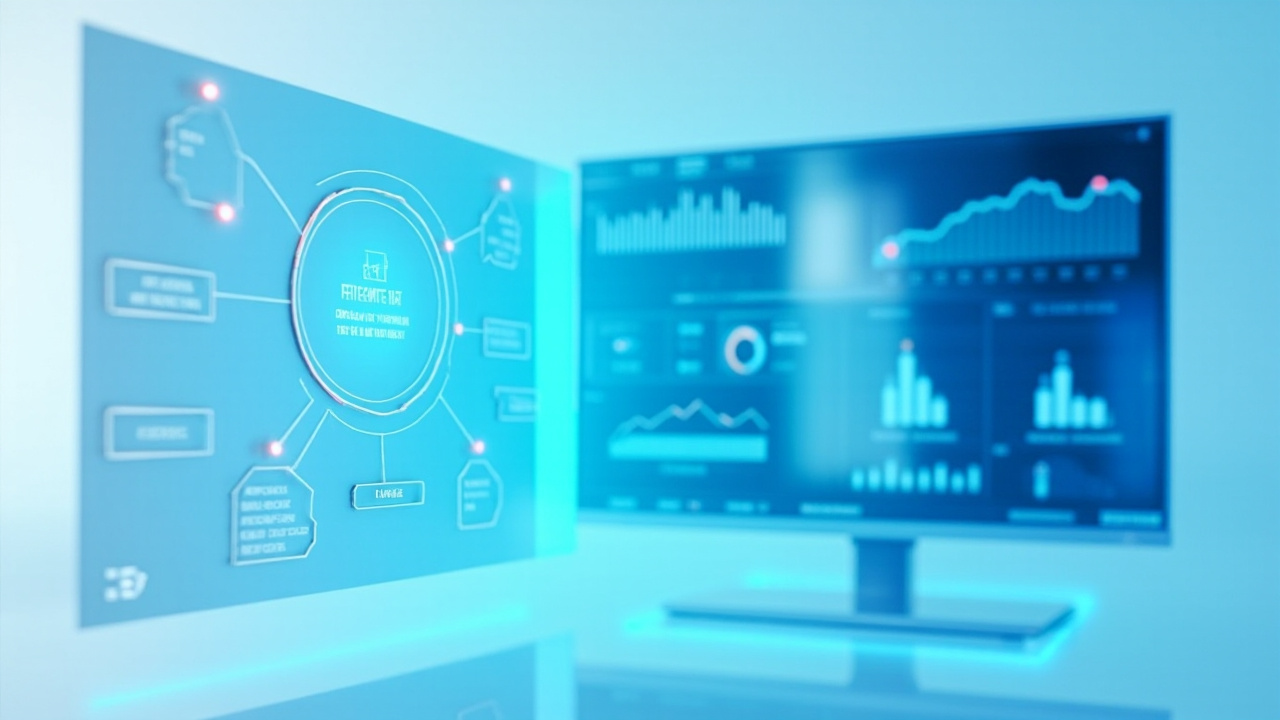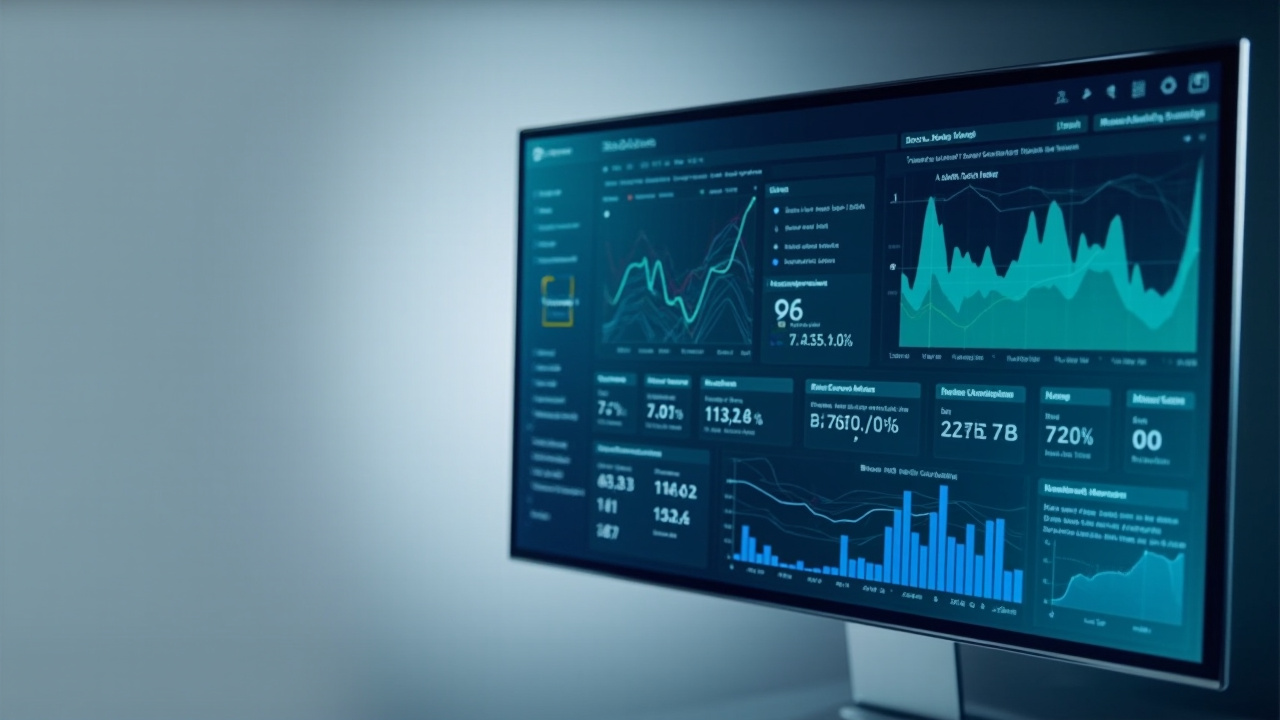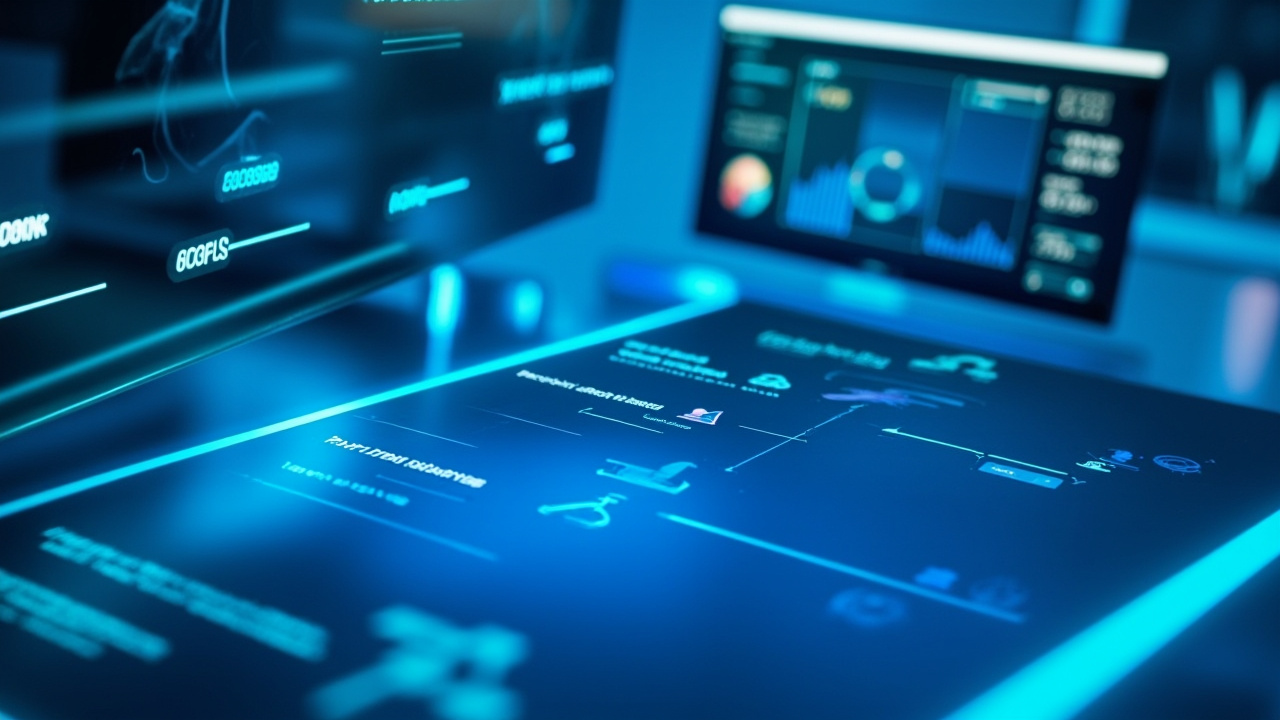In the digital age, software is the backbone of innovation, driving everything from the apps on our smartphones to the systems controlling critical infrastructure. As the complexity of software increases, so too does the need for rigorous testing. Traditional software testing methods, while effective, often fall short in the face of rapid development cycles, complex architectures, and the demand for flawless user experiences. Enter artificial intelligence a transformative force that promises to revolutionize the way we test software.
But how exactly does AI enhance software testing? This blog post delves into the challenges faced by traditional testing methods, explores the innovative solutions AI offers, and highlights how tools like GenQE are paving the way for a new era of software quality assurance.
The Limitations of Traditional Software Testing

Software testing has long been a vital component of the development lifecycle. It ensures that applications function as intended and meet user expectations. However, as software becomes more intricate, conventional testing methods encounter significant hurdles.
The Growing Complexity of Software
Today’s software systems are more complex than ever, often involving multiple interconnected components, third-party integrations, and diverse user scenarios. This complexity makes it increasingly difficult for traditional testing methods to achieve comprehensive coverage. Manual testing, in particular, can be labor-intensive and error-prone, introducing the risk of human oversight.
One notable example is the development of enterprise-level applications, which often require integration across various functional modules such as finance, supply chain, and customer relationship management. Testing such systems manually can be daunting. Not only does it demand vast resources, but it also increases the probability of missing critical defects due to human limitations in handling such intricate details.
“In the race to deliver new features, traditional testing methods are like trying to catch a bullet train on horseback.”
The Pressure of Accelerated Development Cycles
With the rise of agile methodologies and continuous integration/continuous deployment (CI/CD) pipelines, development cycles have become shorter and more frequent. This places immense pressure on testing teams to validate changes quickly without compromising quality. Traditional methods struggle to keep pace, often leading to bottlenecks in the development process.
Consider the scenario of a tech startup aiming to release updates every two weeks. The rapid pace demands a robust testing process that can keep up with the development speed. In such environments, manual testing can become a bottleneck, delaying releases and frustrating both developers and users. The need for speed often results in insufficient testing coverage, leading to defects escaping into production.
The Cost of Quality
Ensuring high software quality is not just about catching bugs; it’s about preventing them from reaching production. The cost of fixing defects increases exponentially the later they are discovered in the development lifecycle. Traditional testing methods, which often catch issues late, can lead to significant financial repercussions.
For instance, a study by the Systems Sciences Institute at IBM revealed that the cost of fixing a bug discovered after product release was four to five times greater than if it were detected during the design phase. This highlights the financial impact of relying solely on traditional testing methods, which may not adequately catch defects early in the process.
As we transition to the next section, let’s explore how AI addresses these challenges, offering innovative solutions that enhance the efficiency and effectiveness of software testing.
Harnessing AI for Enhanced Test Automation

Artificial intelligence is reshaping industries across the globe, and software testing is no exception. By automating repetitive tasks, improving accuracy, and providing deeper insights, AI is set to redefine the testing landscape.
AI-Driven Test Case Generation
One of the most time-consuming aspects of software testing is the creation of test cases. AI-driven tools analyze software requirements, user behavior, and historical data to generate comprehensive test cases automatically. This not only reduces the dependency on manual test design but also improves test coverage and efficiency.
Example: Imagine a scenario where a new feature is being added to a mobile app. An AI-powered tool can analyze similar features and user interactions to generate relevant test cases, ensuring that the new feature integrates seamlessly with existing functionalities. This level of automation allows teams to focus more on innovation and less on the mundane aspects of test preparation.
Furthermore, AI tools can continuously learn from past testing experiences, adapting and refining their test case generation over time. This continuous improvement ensures that test cases remain relevant and comprehensive as software evolves, providing a dynamic response to changing test requirements.
Intelligent Test Execution
AI can optimize the execution of test cases by prioritizing those with the highest risk of defects. This ensures that critical areas are tested first, allowing teams to focus their efforts on high-impact issues. This risk-based approach not only saves time but also enhances the reliability of the software.
“AI doesn’t just automate testing; it makes it smarter, allowing teams to focus on what truly matters.”
In traditional setups, test execution follows a predefined sequence, often without consideration of the current risk profile of the software. AI changes this by analyzing real-time data and adjusting priorities accordingly. For instance, if a recent code change affects a critical payment module in an e-commerce application, AI can prioritize tests related to that module, ensuring potential issues are caught early.
Moreover, AI-driven execution can run tests in parallel across multiple environments, significantly reducing the time required to execute a comprehensive test suite. This parallel execution is particularly beneficial in large-scale enterprise applications with numerous dependencies and interactions.
Self-Healing Automation
Traditional test scripts are notorious for breaking when UI elements change. AI introduces self-healing capabilities that automatically adjust test scripts to accommodate changes, significantly reducing maintenance efforts and minimizing downtime.
AI’s self-healing automation is a game-changer for UI testing, where frequent changes can render scripts obsolete. For example, if a button’s label or position changes, AI can detect this alteration and adjust the script accordingly, ensuring that tests continue to run smoothly without manual intervention. This capability not only reduces the burden on QA teams but also ensures continuous testing without interruptions.
With AI’s ability to streamline and enhance test automation, the focus now shifts to ensuring comprehensive test coverage across various platforms.
Achieving Comprehensive Test Coverage with AI

In today’s multi-platform world, software must function seamlessly across a variety of devices and environments. AI helps achieve comprehensive test coverage by extending testing capabilities beyond traditional boundaries.
Cross-Platform Testing
AI-powered tools enable testing across different platforms, including web, mobile, APIs, and cloud environments. This ensures that applications deliver consistent functionality and performance, regardless of the device or operating system.
Case Study: A leading e-commerce company leveraged AI to test its platform across multiple devices and browsers. By doing so, they identified critical rendering issues on certain mobile devices, allowing them to address these before launch. This proactive approach not only enhanced customer satisfaction but also prevented potential revenue loss due to poor user experiences on mobile devices.
AI’s ability to simulate a wide range of devices and configurations is crucial in today’s fragmented technology landscape. Whether it’s testing an app on various Android versions or ensuring a web application runs smoothly on different browsers, AI provides the flexibility needed to cover all bases.
Early Defect Detection
AI excels at identifying patterns and anomalies in test results, allowing it to detect defects early in the development cycle. This proactive approach prevents critical issues from reaching production, reducing the cost and impact of defects.
“By catching defects early, AI not only saves costs but also preserves brand reputation.”
For example, AI can analyze logs and performance metrics to identify trends that indicate potential defects. If a particular function exhibits unusual behavior, AI can flag it for further investigation, allowing developers to address the issue before it affects users. This early detection is particularly valuable in industries where software reliability is paramount, such as finance and healthcare.
Seamless Integration with Development Pipelines
AI-driven testing tools integrate effortlessly with DevOps and CI/CD pipelines, ensuring that automated testing is a seamless part of the development process. This integration enhances collaboration between development and testing teams, accelerating the delivery of high-quality software.
Integrating AI into existing pipelines involves more than just adding another tool; it requires a shift in how teams approach testing. By embedding AI-driven testing into every stage of the development cycle, teams can identify issues earlier and more frequently, leading to faster feedback loops and more robust software.
As we continue, we will explore how AI-powered defect detection adds another layer of reliability and efficiency to software testing.
The Role of AI in Defect Detection

Detecting and addressing defects early in the development process is crucial for maintaining software quality. AI introduces advanced capabilities for identifying potential issues, ensuring that software is robust and reliable.
Machine Learning for Defect Detection
AI leverages machine learning algorithms to analyze test results and identify patterns indicative of potential defects. This allows teams to address issues before they escalate, reducing the likelihood of defects reaching production.
Practical Application: Consider a scenario where an AI tool detects a pattern of intermittent failures in a specific module. By flagging this early, the development team can investigate and resolve the root cause, preventing a potential outage. This proactive defect detection is especially beneficial in mission-critical applications where downtime can result in significant financial losses.
AI’s machine learning models are trained on vast datasets, enabling them to recognize subtle patterns that might elude human testers. This capability is particularly valuable in identifying defects that manifest under specific conditions or usage patterns, which are often missed in traditional testing.
Enhanced Accuracy and Precision
AI’s ability to process vast amounts of data with precision allows it to identify subtle defects that might be missed by traditional methods. This enhanced accuracy ensures that even the most elusive bugs are caught and addressed promptly.
“AI’s precision in defect detection is like having a microscope that reveals the tiniest imperfections.”
For instance, AI can analyze user interactions and system logs to detect anomalies that indicate potential defects. These anomalies, while minor, can have significant implications if left unaddressed. By catching them early, AI helps maintain software integrity and user trust.
Continuous Learning and Improvement
AI-powered tools continuously learn from test results, improving their accuracy and effectiveness over time. This iterative process enhances the reliability of defect detection, ensuring that software quality improves with each release.
Continuous learning is a hallmark of AI in software testing. As AI tools process more data and encounter diverse scenarios, they refine their models, becoming more adept at identifying defects. This ongoing improvement ensures that AI-driven testing remains effective even as software evolves and new challenges arise.
The next section will delve into the integration of AI tools within existing development processes, ensuring a smooth transition and maximizing the benefits of AI-driven testing.
Integrating AI Tools into Development Processes

For AI-driven testing to be truly effective, it must integrate seamlessly with existing development workflows. This section explores how AI tools can be incorporated into development processes, enhancing collaboration and efficiency.
Aligning AI with DevOps Practices
AI tools must align with DevOps practices to ensure that testing is an integral part of the development pipeline. This involves integrating AI-driven testing tools with CI/CD systems, enabling automated testing to occur at every stage of development.
Example: A software company integrated its AI testing tool with Jenkins, allowing automated tests to run with every code commit. This integration ensured that defects were identified and addressed in real-time, reducing the time to market for new features. By embedding AI testing into their DevOps pipeline, the company achieved faster feedback loops and a more agile development process.
The integration of AI tools with DevOps practices requires careful planning and execution. It involves not only technical integration but also cultural changes within the organization. Teams need to embrace a mindset of continuous improvement and collaboration, where AI-driven insights inform decision-making at every level.
Collaboration Between Development and Testing Teams
AI-driven testing fosters collaboration between development and testing teams by providing shared insights and actionable recommendations. This collaborative approach ensures that quality is a shared responsibility, enhancing the overall effectiveness of the development process.
“AI is not a replacement for human expertise; it’s a partner that enhances collaboration and innovation.”
For instance, AI-generated reports can highlight areas of concern that require joint attention from developers and testers. These insights promote open communication and a unified approach to problem-solving, breaking down silos and fostering a culture of collaboration.
Adapting to Changing Requirements
AI tools are designed to adapt to changing software requirements, ensuring that testing remains relevant and effective as projects evolve. This adaptability is crucial in agile environments, where requirements can change rapidly.
AI’s adaptability is one of its most valuable traits. As projects evolve and requirements shift, AI tools can adjust their testing strategies accordingly. This ensures that testing remains aligned with project goals and continues to provide valuable insights throughout the software development lifecycle.
With AI seamlessly integrated into development processes, the focus shifts to the advanced analytics and reporting capabilities that AI brings to software testing.
Advanced Analytics and Reporting with AI

The ability to analyze and report on software quality is vital for making informed decisions and driving continuous improvement. AI enhances these capabilities, providing deeper insights and actionable recommendations.
AI-Driven Insights and Dashboards
AI-powered testing tools offer advanced analytics and interactive dashboards that provide a comprehensive view of software quality. These insights enable teams to track trends, identify areas for improvement, and make data-driven decisions.
Case Study: A financial services company utilized AI-driven analytics to monitor the stability and performance of its online platform. The insights gained allowed them to optimize resource allocation and improve user experience. By analyzing user behavior and system performance, they identified opportunities for enhancement, resulting in increased user satisfaction and retention.
AI-driven dashboards provide a real-time view of software quality metrics, allowing teams to monitor performance and stability continuously. This visibility is crucial for making timely decisions and ensuring that software meets user expectations.
Predictive Analytics for Proactive Quality Management
AI introduces predictive analytics that can forecast potential quality issues before they occur. This proactive approach allows teams to address risks early, ensuring that software remains reliable and performant.
“With AI, the future of software quality is not just predictable; it’s manageable.”
Predictive analytics leverages historical data and machine learning models to anticipate potential issues. For example, if a particular module has historically been prone to defects, AI can flag it for additional scrutiny, allowing teams to take preventive measures. This foresight is invaluable in maintaining software reliability and preventing costly disruptions.
Actionable Recommendations
AI tools provide actionable recommendations based on test results, guiding teams on the best course of action to address identified issues. This guidance enhances decision-making and ensures that efforts are focused on high-impact areas.
Actionable recommendations are a key benefit of AI-driven analytics. By providing clear guidance on addressing identified issues, AI tools empower teams to make informed decisions quickly. This agility is crucial in dynamic environments where responsiveness is a competitive advantage.
As we conclude this exploration of AI in software testing, let’s reflect on the transformative impact AI has and consider the path forward for organizations looking to embrace this technology.
Conclusion: Embracing the AI Revolution in Software Testing

The journey through AI-powered software testing reveals a landscape rich with opportunities for innovation, efficiency, and quality. As software systems grow in complexity, the need for advanced testing methods becomes increasingly apparent. AI, with its ability to automate, analyze, and adapt, offers a powerful solution to these challenges.
GenQE, an AI-powered software quality and testing platform, exemplifies the potential of AI in transforming software testing. By leveraging AI-driven test generation, smart execution, and advanced analytics, GenQE and similar tools enable organizations to deliver high-quality software faster and more efficiently.
For organizations looking to enhance their software testing processes, exploring AI-driven solutions like GenQE offers a path toward improved quality, reduced costs, and accelerated development cycles. As the software testing landscape continues to evolve, embracing AI is not just an option; it’s a necessity.
“In the world of software testing, AI is the catalyst for change, driving us toward a future where quality is not just assured; it’s guaranteed.”
Call to Action: As you consider the future of your software testing processes, explore the potential of AI-driven tools like GenQE to revolutionize your approach. Embrace the change and lead your organization into a new era of software quality assurance.
Discover More Innovative Solutions
Want to learn more about the tools and technologies discussed in this article? Explore how these innovations can be tailored to your specific needs and workflow requirements.
Our team of experts is available to answer your questions and provide personalized insights into how modern solutions like GenQE can address your specific challenges.
If the link above does not work, please visit: https://calendly.com/dm-csimplifyit/30min?month=2025-05